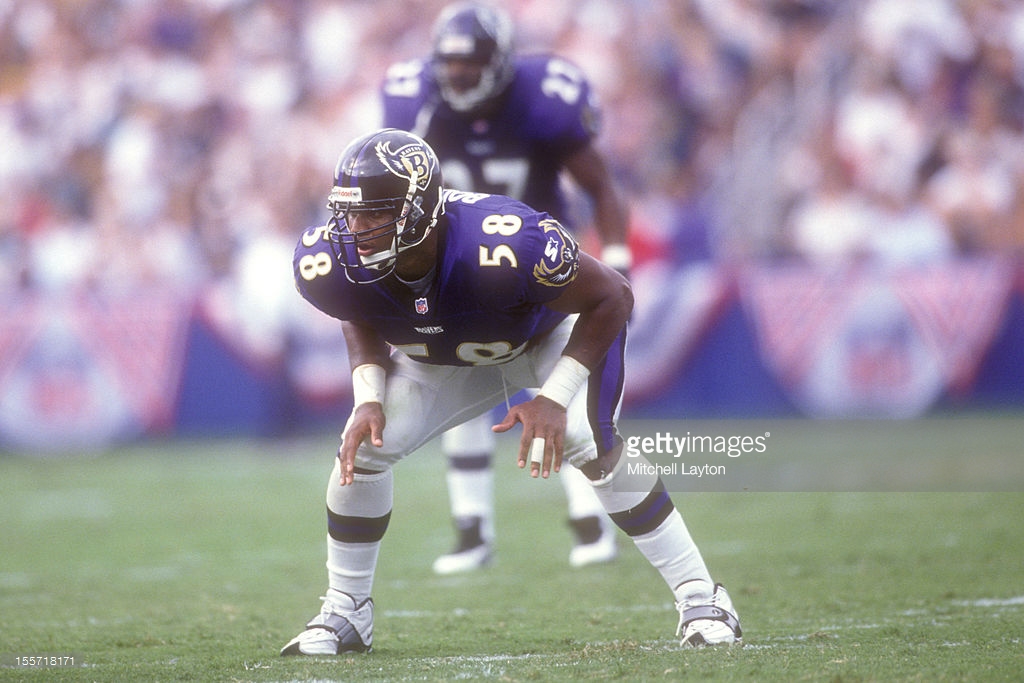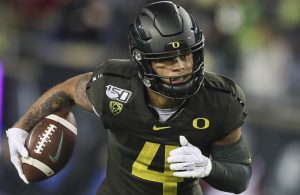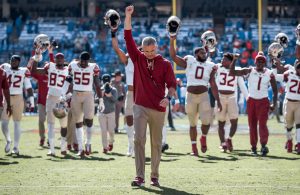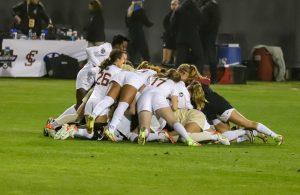- Sunday Seminole Summary: FSU Football Adds Pair of WR Transfers
- Sunday Seminole Summary: FSU Football Exits ESD With Top-15 Class
- Sunday Seminole Summary: FSU Soccer Tops BYU for Third National Championship
- Sunday Seminole Summary: FSU Soccer Advances to National Championship Match
- Seminole Sunday Summary: FSU Soccer Heads Back to College Cup
- Seminole Sunday Summary: FSU Soccer Reaches Sweet 16; Football Tops Boston College
- Seminole Sunday Summary: FSU Soccer Wins ACC, Advances to Second Round of NCAA Tournament; FSU Football Rallies Past Miami
- Seminole Sunday Summary: FSU Soccer Tops Wake on OT to Advance to ACC Final
- Seminole Sunday Summary: FSU Football Crushes UMass for Third Straight Win
- Seminole Sunday Summary: FSU Soccer Stays Perfect with Pair of Wins
What is the Best FSU Draft Class of All-Time?
- By Clint Eiland
- Updated: April 19, 2017
 Mitchell Layton/Getty Images
Mitchell Layton/Getty ImagesHere’s some good news for football fans tired of the NFL Draft coverage: it’s almost over. There are now less than 10 days remaining until it kicks off on April 27 in Philadelphia. Florida State has a decently talented draft class this year, with around five players that should be selected at some point in the process.
As mentioned before, Florida State is familiar with the draft, setting the record for the number of players selected in a 3-year window and generally being productive in pro development.
This got us thinking about which year produced the best FSU draft class of all-time. Obviously the 2014 and 2015 classes receive much of the discussion, because they have had a variety of players make immediate impacts (Jameis Winston, Kelvin Benjamin, Devonta Freeman, Ronald Darby, etc.). Those classes still could eventually be the greatest ever, but a few more years are needed to see how they pan out.
For the sake of this article, the past five draft classes (2012-16) are not eligible for selection. Every one before then is fair game. After looking through draft history, there are three contenders for the title of “greatest FSU draft class of all-time”.
There were a few factors that went in to determining the overall strength of a class. The first criteria: Number of Pro-Bowls/All-Pro Selections/League Awards. The raw number is not the end-all, be-all of the exercise, but it certainly helps an argument. The second is the productivity in the league.
Many players never get tagged as the league’s best, but they are still quality starters who solidified their spot on a team. Finally, a class has to have more than just one player dominating. The greatest class of all-time should have multiple players who make their mark on the sport.
1997
Selections: Peter Boulware, Walter Jones, Warrick Dunn, Reinard Wilson, Henri Crockett, Vernon Crawford, Byron Capers
Combined Accolades: 16 Pro Bowls, 7 All-Pro Selections, Hall of Fame Inductee (Jones), Offensive Rookie of the Year (Dunn), Defensive Rookie of the Year (Boulware)
The talent in this class all got selected early on. The first four names were all chosen in the top 15 picks, and each made an immediate impact. Not surprisingly, all of the first-round picks saw great success in the league. Peter Boulware was a crucial part of the Baltimore Ravens’ 2000 Super Bowl-winning team, Walter Jones was one of the best offensive tackles of all-time, and Warrick Dunn redefined what running backs could be utilized as. The “odd man out” so to speak would be Reinard Wilson, but even he was able to play in 93 games and had his time as a pass-rusher. Beyond those four, linebacker Henri Crockett had the most impact with 41 games started for the Atlanta Falcons and the Minnesota Vikings.
1998
Selections: Andre Wadsworth, Tra Thomas, Sam Cowart, Samari Rolle, E.G. Greene, Greg Spires, Julian Pittman, Shevin Smith, Kevin Long
Combined Accolades: 5 Pro Bowls, 3 All-Pro Selections
Yes, it is a bit weird to see back-to-back classes in the top 3. The 1998 class does not have near the number of accolades that the 1997 class does, but it does have depth. Oddly enough, the highest selected player (Wadsworth) was the well-known bust of the class, lasting only three seasons in the NFL due to knee injuries. Thomas, Cowart, and Rolle were all selected to at least one Pro Bowl. Spires was a longtime starter for the Tampa Bay Buccaneers and a defensive end on their 2002 Super Bowl-winning team. Finally, Long only played four years, but started 35 games for the Tennessee Titans. It might not have the star power, but the 1998 class was great for teams looking for reliable, long-term players. Plus Rolle was raw in “NFL Street”. That has to count for something, right?
2000
Selections: Peter Warrick, Corey Simon, Sebastian Janikowski, Ron Dugans, Laveranues Coles, Jerry Johnson, Mario Edwards
Combined Accolades: 3 Pro Bowls, 1 All-Pro Selection
This class has a similar “hit rate” to the 1997 one, though obviously without the accumulation of awards. It still produced five legitimate starters and one intermediate player (Ron Dugans). Warrick might never have lived up to the hype he had out of college, but he still started in 60 games and had almost 3,000 receiving yards for his career. Meanwhile, defensive tackle Corey Simon was part of a tough interior defense for the Philadelphia Eagles, while Janikowski has become one of the greatest kickers in NFL history. Coles was a consistently good receiver that even got a Pro Bowl selection for his success. Mario Edwards rounds out the group by being a very productive sixth-round pick; he started 50 games for the Dallas Cowboys and Buccaneers in his 5-year career.
*As a side note before the winner is chosen, here’s a weird bit about the 2002 class: There were only two players from FSU selected in receiver Javon Walker and safety Chris Hope. Both players were selected to a Pro Bowl. That’s an impressive 100 percent success rate.
Winner: 1997
This was actually closer than it might seem. Both the 1997 and 1998 classes had groups of talented and noteworthy players, but the top end of the 1997 class was so impactful that it takes the distinction. It is fair to say that each of Boulware, Jones, and Dunn were top-10 players at their positions during their playing careers. Jones was one of the best tackles in the history of the league. To get that sort of production out of three different first-round picks indicates just how talented those late 1990’s teams actually were for Florida State. It’s not like the rest are necessarily “bad” either. As mentioned above, Wilson and Crockett both had productive NFL careers. The 1997 class was near legendary, and it would not be surprising if it was one of the best for a single school in draft history.
Looking on more recent classes, it’s entirely possible one might actually surpass the 1997 class in a few years. But that’s another story for down the road.




You must be logged in to post a comment Login